The most stunning waterfalls in California are renowned for their beauty. If you enjoy exploring waterfalls, you should add a few of these stunning California cascades to your itinerary if you plan to visit the Golden State in the spring or early summer, when the falls are at their most impressive. This article explores the 13 best waterfalls in California you should visit.
While some waterfalls in California can be seen simply by pulling over to the side of the road or by taking a short stroll to a viewing point, others call for moderate to difficult hiking or even multi-day trekking. We’ve included both falls that are accessible and difficult to reach in our compilation of the top waterfalls in California.
We’ve provided a brief description of how to reach each waterfall so you can decide if it’s appropriate for your level of hiking experience. Some of these waterfall routes are in wilderness areas, so use caution. And are you prepared to explore California’s most breathtaking waterfalls? Let’s start now.
Burney Falls
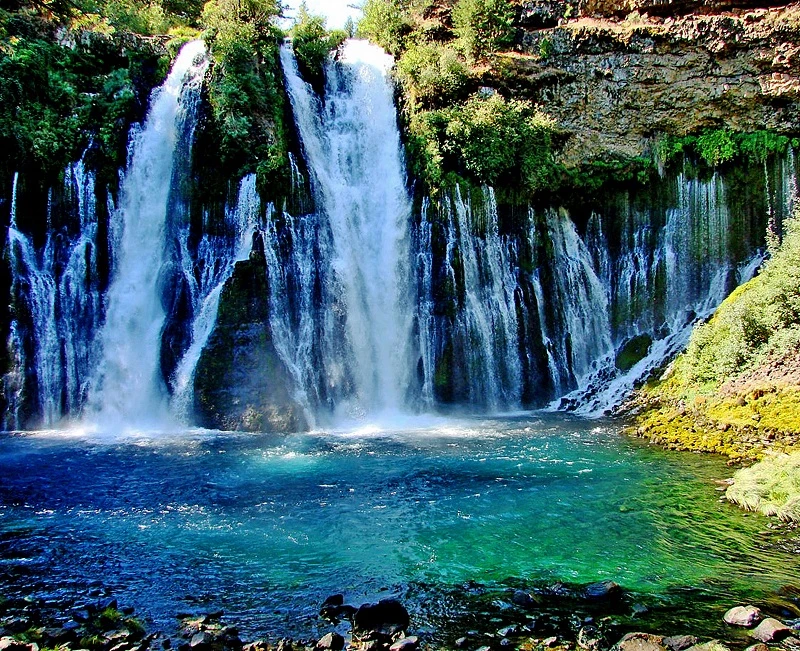
The 129-foot Burney Falls, which is possibly the most spectacular waterfall in California, has a curtain of cascades and is surrounded by lush vegetation. The waterfall, which is situated in McArthur-Burney Falls Memorial State Park, is most beautiful between April and October. Avoid crowds by going early or late in the day.
Burney Falls’ main feature is that it continues to flow water throughout the summer, unlike other California waterfalls that dry up. The Burney Falls Loop Trail, which is easy to moderate, leads to an overlook above the falls before descending to the base of the falls for a magnificent up-close view.
The water’s surrounding moss and lichen are green, which makes for stunning photographs. Fall’s vibrant leaf colors are a bonus. One of our favorite waterfalls in California is Burney Falls since it is both stunning and convenient to reach.
Yosemite Falls, Yosemite National Park
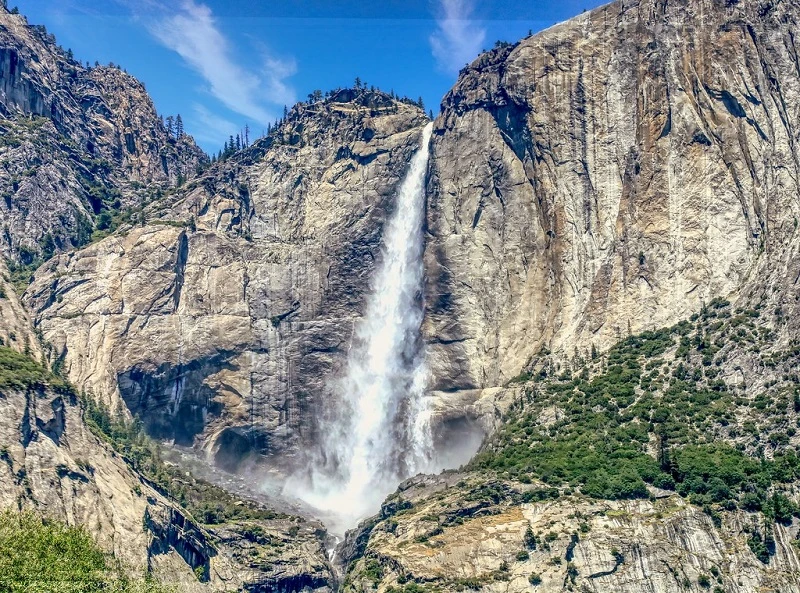
Incredible Yosemite Falls plunges 2,425 feet to the ground. The most recognizable waterfall in Yosemite National Park, it is also one of the tallest in the entire globe.
Yosemite Falls typically reaches its greatest flow in May, but there is also flow from November through June or July. From various locations in Yosemite Valley, you may see Yosemite Falls.
To reach the base of Lower Yosemite Falls, there is a flat, simple one-mile loop walk; a portion of this track is also wheelchair accessible. Both Upper and Lower Yosemite Falls may be seen from the spray-in-your-face vantage point.
Yosemite Falls can be reached from the summit through a strenuous trek for anyone eager for a challenge. With a roundtrip distance of 7.2 miles, the hike gains 2,700 feet in altitude.
Mcway Falls, Big Sur
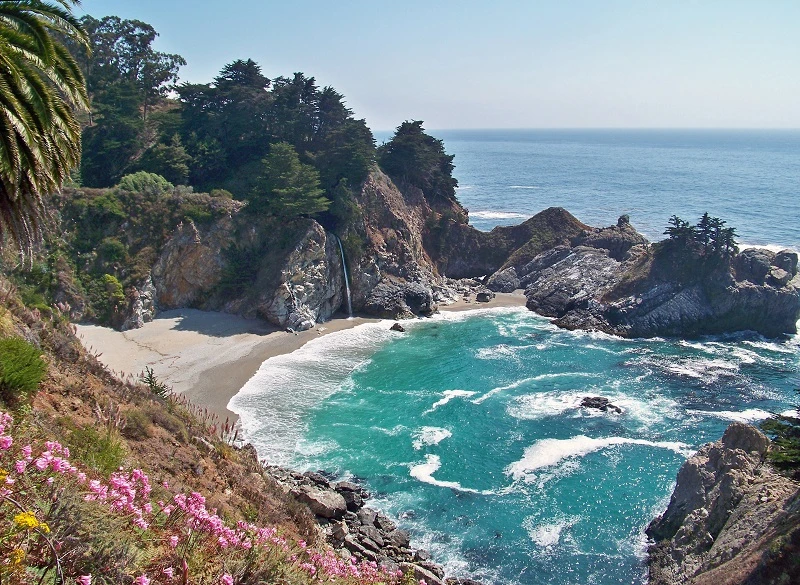
Most nature lovers who are traveling to California have McWay Falls on their bucket list. The delicate ribbon, one of Big Sur’s most well-known sights, pours over a granite cliff and into the stunning beach. It is the ideal postage stamp.
From California Highway 1, you may see McWay Falls by stopping and parking on the side of the road. The quick McWay Falls Overlook Trail at Julia Pfeiffer Burns State Park offers a clear perspective.
One of the shortest walks in Big Sur is the 0.5-mile roundtrip trek to the “Big Sur waterfall.” The McWay Falls Overlook Trail is currently closed due to erosion at roughly the halfway mark, but you can still see the waterfall. The views from a distance are spectacular, but there is no access to the cascade or the beach below.
Mccloud Falls, Mccloud
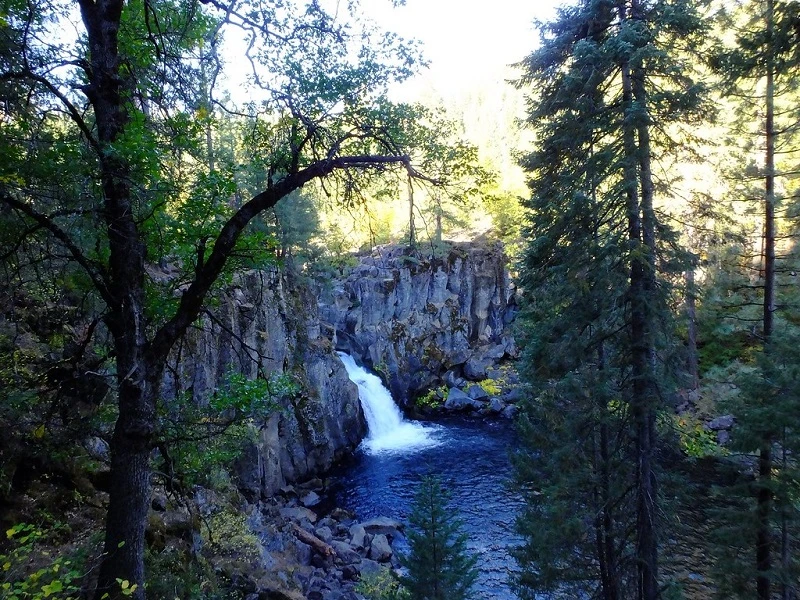
As it flows through a basalt gorge, the McCloud River forges three stunning waterfalls. Each of the three waterfalls is beautiful to watch and makes for great photos. At Lower McCloud Falls, there are places to have a picnic.
At Lower Falls and Middle Falls, swimming is very popular, however jumping in is not recommended because of submerged pebbles. You can reach the water’s edge at Lower Falls by climbing a stone staircase. The additional falls can be reached by hiking the River Trail from Lower Falls.
The Middle Falls trail is rather flat for the first 0.7 miles before ascending in switchbacks to an overview of Middle Falls, from which point another flat section leads to an overlook of Upper Falls. The base of Upper Falls has no authorized access. After finishing your exploration of Lower Falls, you can drive to the views for Middle and Upper Falls if you’d rather not trek.
Bridalveil Fall
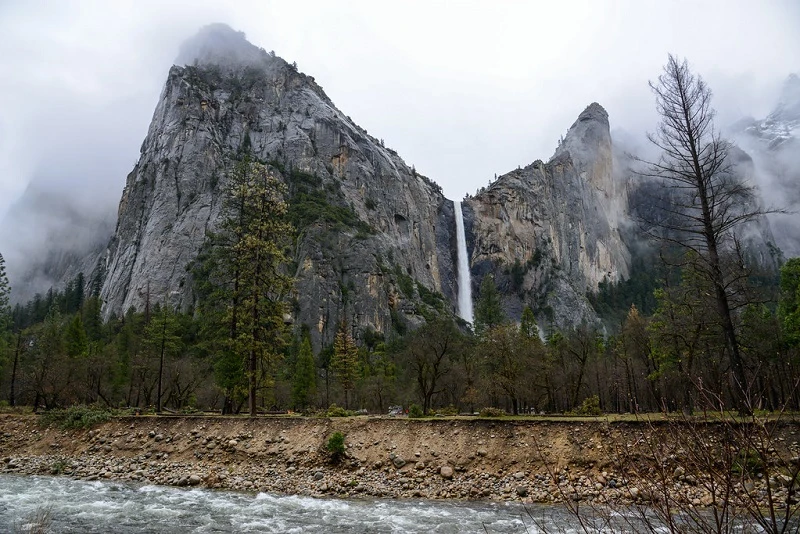
One of Yosemite National Park’s most well-known vantage points, Tunnel Vista, offers a stunning view of Bridalveil Fall. The 620-foot fall has a dramatic springtime descent and a calmer cascade in the summer and fall. This waterfall runs continuously.
You may feel the spray of Bridalveil Fall on your face as you descend a short, flat (but uphill) trail to its base. A waterproof jacket is an excellent choice in the spring because you might get wet. This paved stroll is only 0.5 miles in total, but it has a lovely reward.
Escondido Falls, Malibu
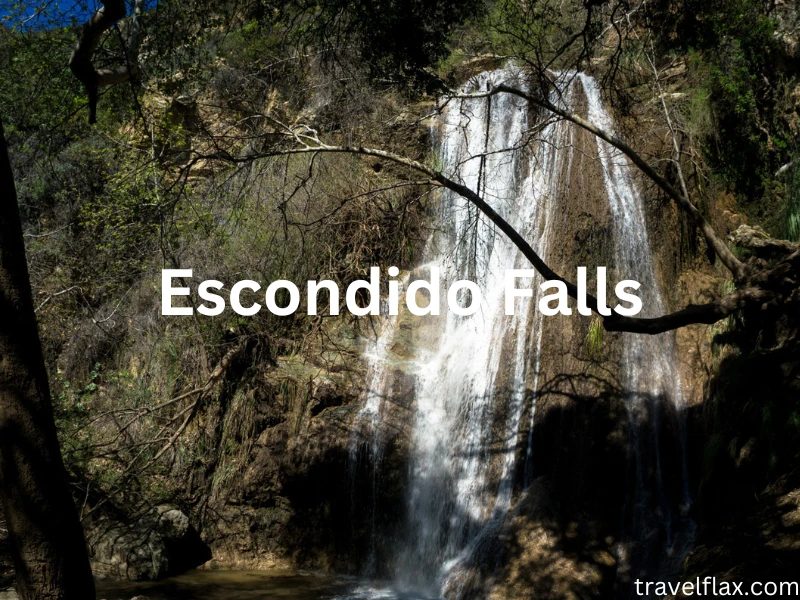
Escondido Falls, one of the most stunning waterfalls in Southern California when it is flowing well, is about the journey as well as the destination because the climb to get there is scenic and shaded. Getting to the Lower Falls is simple and only requires a 2-mile roundtrip climb.
This is among the top waterfall treks accessible from Los Angeles. Off the Pacific Coast Highway, there is access to the Winding Way Trail to Escondido Falls. If you trek the Escondido Canyon route in the spring, you’ll see a lot of wildflowers because it follows a little creek.
The riparian environment is lovely. A nice pool is reached after a 50-foot drop at Lower Escondido Falls. The amount of rain that the area has received affects how strong the flow is. Although seasoned hikers ascend the base of the Upper Escondido Falls, the trail is not officially sanctioned beyond the base of the Lower Falls. The Upper Falls has a 150-foot descent.
Alamere Falls, Sonoma Coast
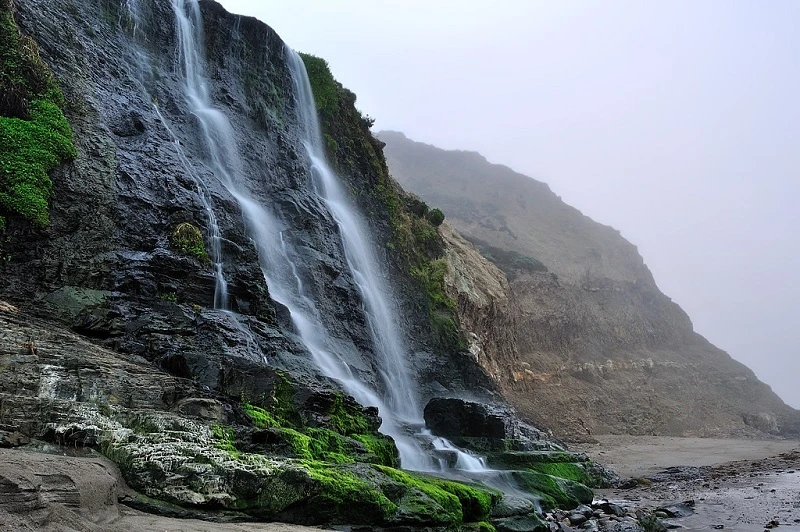
Alamere Falls is situated in the Point Reyes National Seashore’s Phillip Burton Wilderness Area. The tidefall at Wildcat Beach cascades down a 40-foot cliff and into the sand, creating a breathtaking picture, especially when the flow is strong.
The bad news is that the distance from Palomarin, the closest trailhead, to Alamere Falls is 13 miles round trip. To observe the waterfall, hike from the trailhead to Wildcat Campground and then proceed one mile south on Wildcat Beach.
The only two tide falls on the California coast are Alamere Falls and McWay Falls, and despite the challenging climb required to reach them, Alamere Falls is a popular destination. Visitors must be prepared because there are few to no amenities at the falls.
Kings Creek Falls
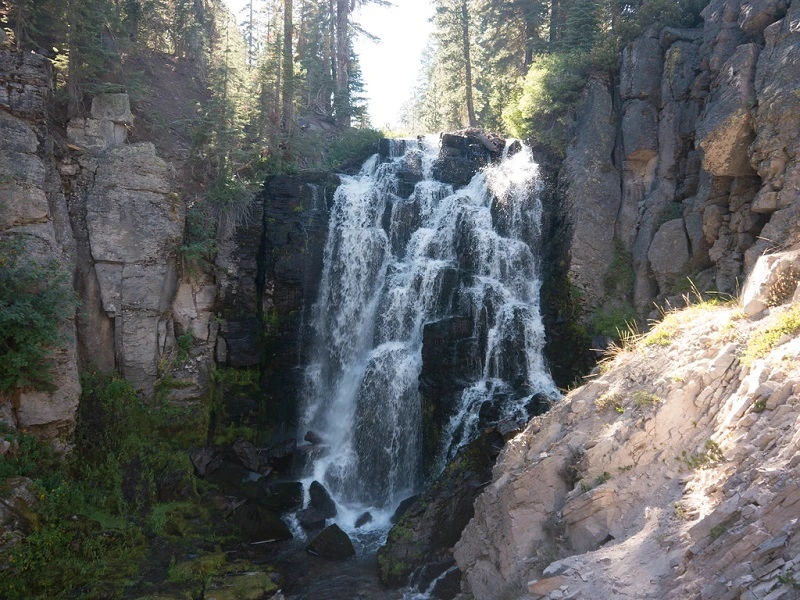
One of the best attractions in Lassen Volcanic National Park, one of the less popular national parks in California, is Kings Creek Falls. From the overlook, the impressive 30-foot waterfall thunders down the rock, framed by moss, ferns, and other foliage.
The three-mile circle to Kings Creek Falls is classified as moderate in part due to the challenging stone stairs on the way back. You can also decide to go back to the 700 feet that you dropped to reach the overlook.
If you go when the wildflowers are in bloom, the walk passes through a meadow on the way in. Because the trail might be muddy, the stairs can be treacherous, and snow may still be there in the summer, it is important to wear excellent hiking boots with good traction.
Nevada Fall, Yosemite National Park
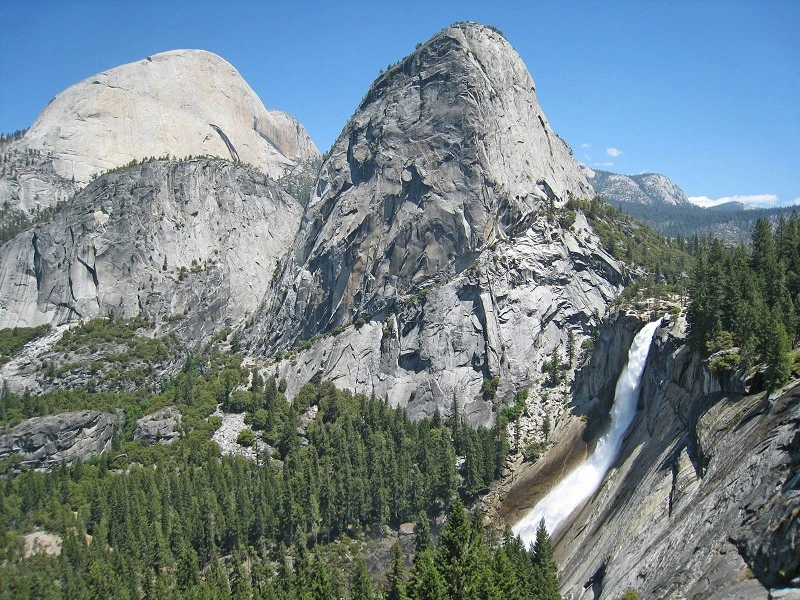
The Merced River creates Nevada Fall, one of Yosemite’s tall waterfalls, which cascades 594 feet over a granite cliff. If you don’t feel like hiking, you can view Nevada Falls from Glacier Point. You can choose between the John Muir Trail or the Mist Trail to obtain close-up views of Nevada Fall’s drama.
Vernal Fall and Nevada Fall can be seen on the difficult walks, along with some of the park’s spectacular beauty. A less difficult descent is possible by ascending Mist Trail and returning by John Muir Trail.
Mist Trail is 5.4 miles round trip, steep, and involves 600 steps at a spray-in-your-face distance from the falls followed by a series of steep switchbacks for a 2,000-foot elevation increase.
Vernal Fall, Yosemite National Park
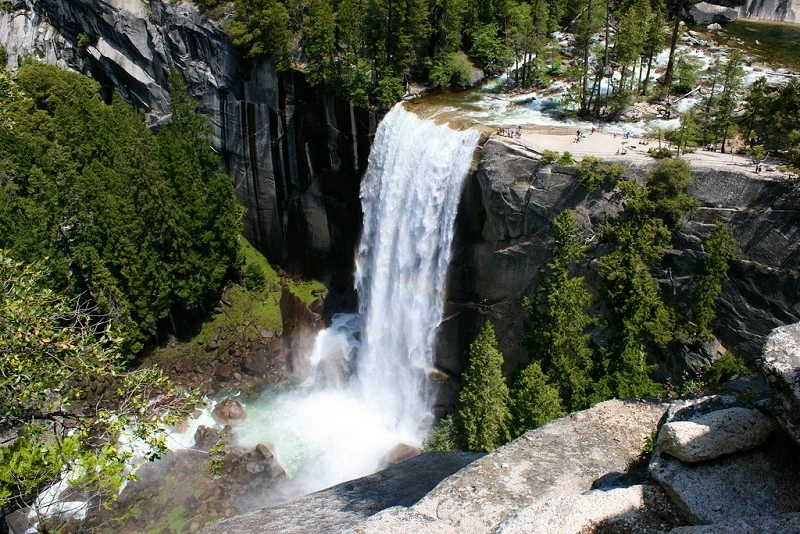
Yosemite National Park is home to the sizable waterfall known as Vernal Fall. One of Yosemite’s most popular and difficult paths, the Mist Trail, also known as the Giant Staircase, leads to both Vernal Fall and Nevada Fall.
On the Mist Trail, you ascend directly next to the falls while taking in breath-inspiring views and being thoroughly soaked in the spring and early summer.
Although the entire Mist Trail is difficult to hike, most tourists easily do the first 0.8 miles to a footbridge for a stunning view of Vernal Fall. You can climb as far as you like from the footbridge before turning around, or you can hike to the top of the fall to see Nevada Fall, Silver Apron, and Emerald Pool.
Horsetail Fall, Yosemite National Park
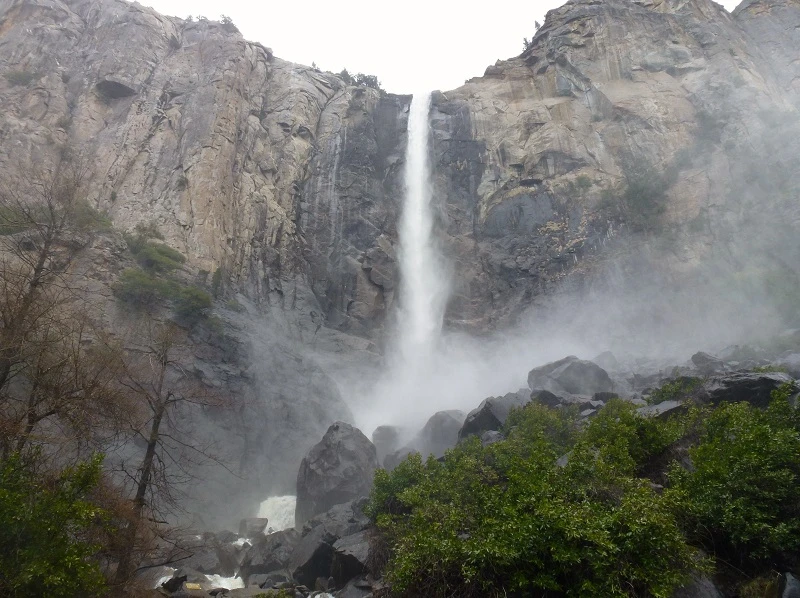
When the conditions are correct and there is a clear sky, Horsetail Fall, which runs over the face of El Capitan in Yosemite Valley, shines a bright orange at sunset for a few weeks each year. Photographers swarm to the location to photograph the spectacular natural Firefall during the show.
During a few weeks in mid to late February, the park places parking restrictions at the location due to the crowds. It is approximately a three-mile round trip walk from the parking lot to the viewing point next to El Capitan Picnic Area.
Horsetail Fall only occurs in the winter, and even then, you might not see it since it is not particularly noticeable unless it burns like an orange ribbon of fire.
Feather Falls, Oroville
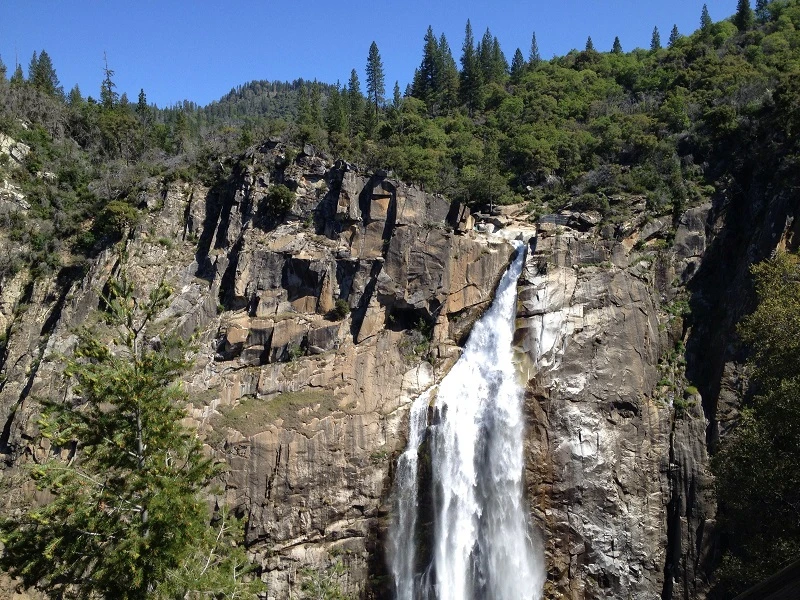
The feather falls also known as the Plumas National Forest is home to the magnificent year-round cascade. The 410-foot drop of the cascade makes for an impressive spectacle.
One of the best significant waterfalls in California outside of Yosemite National Park is usually regarded as Feather Falls. The Bald Rock Canyon and Bald Rock Dome may both be seen in stunning detail from the climb to the falls.
The moderately difficult higher trail to the falls, which is shorter and easier than the lower trail, is around 9 kilometers round trip.
Give yourself plenty of time, and bring drinks and snacks. The ideal time to see Feather Falls is from spring to fall. Spring is a lovely time to visit because the manzanita is in bloom and there are many wildflowers.
Salmon Creek Falls, Big Sur
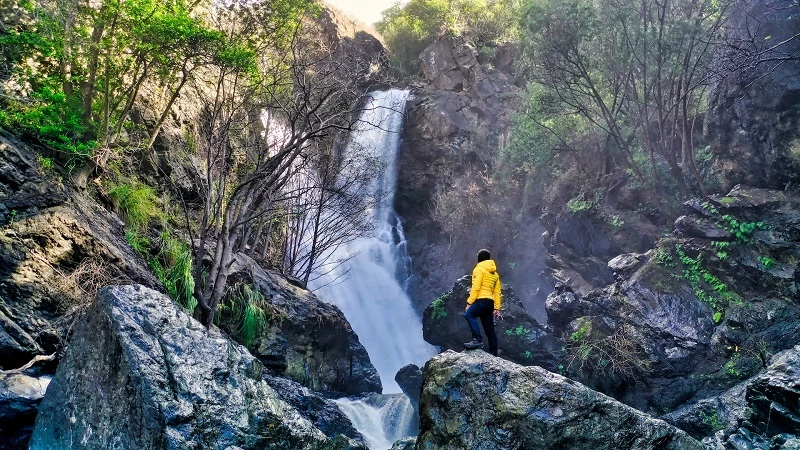
Salmon Creek Falls, a 120-foot waterfall in the Los Padres National Forest in Big Sur, is accessible through a very quick hike off California Highway 1 that takes around 0.3 miles round trip.
The falls are divided at the top but come together in the middle to form a single cascade that cascades down the granite wall.
To reach the foot of the falls, you must scramble and cross a fallen log, but you can see the falls from the trail’s terminus. After winter rains, when the falls are at their most forceful, you might not be able to reach the bottom.
Wear full pants and a long-sleeved blouse, watch your step, and be aware of the poison oak that is prevalent along the crowded trail.
Conclusion
In California, waterfalls may be found anywhere, from imposing mountain cascades to idyllic coastal falls that crash onto pristine beaches. Darwin Falls in Death Valley National Park is the closest waterfall to the driest spot in the nation.
You may therefore discover one or more waterfalls to appreciate wherever in the Golden State you choose to travel. These are only a few of the spectacular waterfalls in Southern California, as you can see. It is well worth the trip and the climb to see these magnificent waterfalls.
